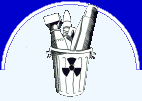This research follows the previous one, published by Nwrg on December 17 last year, in which the group reported the presence of toxic metals in the areas surrounding the craters left by the bombing. Those tests had found abnormal concentrations of toxic metals in the craters, suggesting the possible contamination of the soil which, combined with precarious living conditions, particularly in refugee camps, might cause exposure, dermal, via inhalation and through food.
With the new study, the group set itself the objective of verifying whether people were actually contaminated. The result is alarming: even if the quantity of metals in excess, in fact, are only 2-3 times higher than those found in hair of controls, these levels may still be pathogenic in situations of chronic exposure.
The study, which lasted several months, analyzed the hair for 33 metals by ICP/MS (a type of highly sensitive mass spectrometry). The hair is a good indicator of contamination and investigation of environmental contamination based on its analysis are recommended by the Environmental Protection Agency (EPA) and the International Atomic Energy Agency (IAEA).
Nwrg examined hair samples from 95 people resident in heavily bombed areas (as reported by UNEP on the basis of satellite maps), for the vast majority children. Among them also seven pregnant women and 4 wounded people. The results have established that the distribution of metal contaminants in the three locations where the tests were performed, Beit Hanun, Gaza-Zeitun and Laly Beith, is higher than the average, and more than double in about 60 of these individuals.
In several samples were identified carcinogenic or toxic metals such as chromium, cadmium, cobalt, tungsten and uranium, while in one of the wounded individuals was measured unusually high levels of lead. For 39 of the examinees the simultaneous presence of more metals and/or the presence of carcinogenic metals have prompted researchers to recommend them for further checks.
The problem, says Professor Paola Manduca, now is to eliminate sources of contamination: "The identification of subjects with confirmed, persistent high load of metals would require the removal of the subject from exposure. This last is the most favorite therapeutic approach, in view of lack of evidence on the efficacy and safety of chelation treatment, especially in children. This measure presents serious problems in the current situation in Gaza, where the construction and removal of damaged structures is difficult or impossible, and certainly represents the major responsibility of those who should remedy the damage to the civilian population under international law."
The study is by Mario Barbieri, CNR, and Maurizio Barbieri, Professor of Environmental geochemistry at the University La Sapienza of Rome and head of the ICP/MS laboratory, where the analysis were carried out, and Paola Manduca, Geneticist. The study was possible thanks to the cooperation in the field of the association Gazella, onlus.
Published by www.newweapons.org, 17 March 2010
MORE on Israeli bombing during "Cast lead"
On Uranium Weapons used in Gaza





